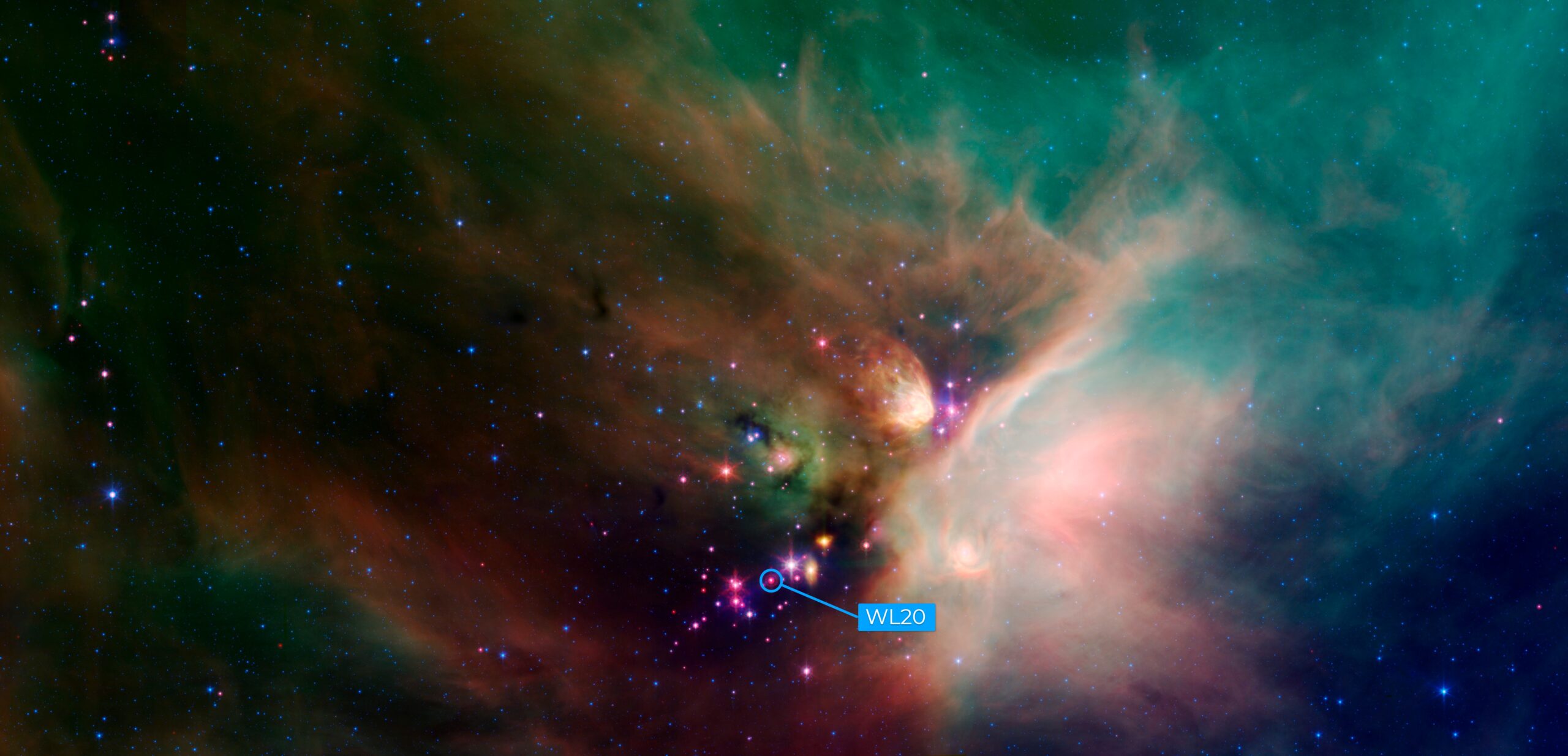Managed by NASA’s Jet Propulsion Laboratory through the launch, the Webb Medium Infrared Instrument also detected jets of gas streaming into space from the twin stars.
Scientists recently got a big surprise from NASA’s James Webb Space Telescope when they turned the observatory toward a cluster of young stars called WL 20. The region has been studied since the 1970s with at least five telescopes, but it took resolution Webb’s unprecedented and specialized instruments. to discover that what researchers had long thought was one of the stars, WL 20S, is actually a pair that formed about 2 million to 4 million years ago.
The discovery was made using the Webb Mid-Infrared Instrument (MIRI) and was presented at the 244th meeting of the American Astronomical Society on June 12. MIRI also found that the twins have jets of gas streaming into space from their north and south poles.
“Our jaws dropped,” said astronomer Mary Barsony, lead author of a new paper describing the results. “After studying this resource for decades, we thought we knew it pretty well. But without MIRI we wouldn’t know there were two stars or that these planes existed. This is really surprising. It’s like having brand new eyes.”
The team got another surprise when additional observations from the Atacama Large Millimeter/submillimeter Array (ALMA), an array of more than 60 radio antennas in Chile, revealed that disks of dust and gas surround both stars. Based on the age of the stars, it is possible that planets are forming in those disks.
The combined results indicate that the twin stars are nearing the end of this early period of their lives, meaning scientists will have the opportunity to learn more about how stars transition from youth to adulthood.
“The power of these two telescopes together is truly incredible,” said Mike Ressler, project scientist for MIRI at NASA’s Jet Propulsion Laboratory and co-author of the new study. “If we hadn’t seen that these were two stars, the ALMA results might just look like a single disk with a gap in the middle. Instead, we have new data about two stars that are clearly at a critical point in their lives, when the processes that formed them are ending.”
WL 20 resides in a much larger and well-studied star-forming region of the Milky Way galaxy called Rho Ophiuchi, a massive cloud of gas and dust about 400 light-years from Earth. In fact, WL 20 is hidden behind thick clouds of gas and dust that block most of the visible light (wavelengths that the human eye can detect) from the stars there. Webb detects slightly longer wavelengths, called infrared, that can pass through those layers. MIRI detects the longest infrared wavelengths of any instrument on Webb and is thus well equipped for looking at obscured star-forming regions like WL 20.
Radio waves can often penetrate dust as well, although they may not reveal the same features as infrared light. The disks of gas and dust surrounding the two stars in WL 20S emit light in a range astronomers call submillimeter; these too penetrate the surrounding gas clouds and were observed by ALMA.
But scientists could have easily interpreted those observations as evidence of a single disc with a gap in it, if MIRI hadn’t also observed the two stellar jets. Gas jets are composed of ions, or individual atoms with a few unpaired electrons that radiate at infrared wavelengths, but not at submillimeter wavelengths. Only an infrared instrument with spatial and spectral resolution like MIRI could see them.
ALMA can also observe clouds of leftover formative material around young stars. Composed of whole molecules, such as carbon monoxide, these clouds of gas and dust emit light at these longer wavelengths. The absence of those clouds in the ALMA observations indicates that the stars are beyond their initial stage of formation.
“It’s amazing that this region still has so much to teach us about the life cycle of stars,” Ressler said. “I’m excited to see what else Webb will discover.”
The James Webb Space Telescope is the world’s leading space science observatory. Webb is solving mysteries in our solar system, peering beyond distant worlds around other stars, and investigating the mysterious structures and origins of our universe and our place in it. Webb is an international program led by NASA with its partners, ESA (European Space Agency) and CSA (Canadian Space Agency).
MIRI was developed through a 50-50 partnership between NASA and ESA. A division of Caltech in Pasadena, California, JPL led the US MIRI effort, and a multinational consortium of European astronomical institutes contributes to ESA. George Rieke with the University of Arizona is the leader of the MIRI science team. Gillian Wright is MIRI’s European Principal Investigator.
Development of the MIRI cryocooler was led and managed by JPL, in collaboration with Northrop Grumman in Redondo Beach, California and NASA’s Goddard Space Flight Center in Greenbelt, Maryland.
Calla Cofield
Jet Propulsion Laboratory, Pasadena, California.
626-808-2469
calla.e.cofield@jpl.nasa.gov
2024-085
